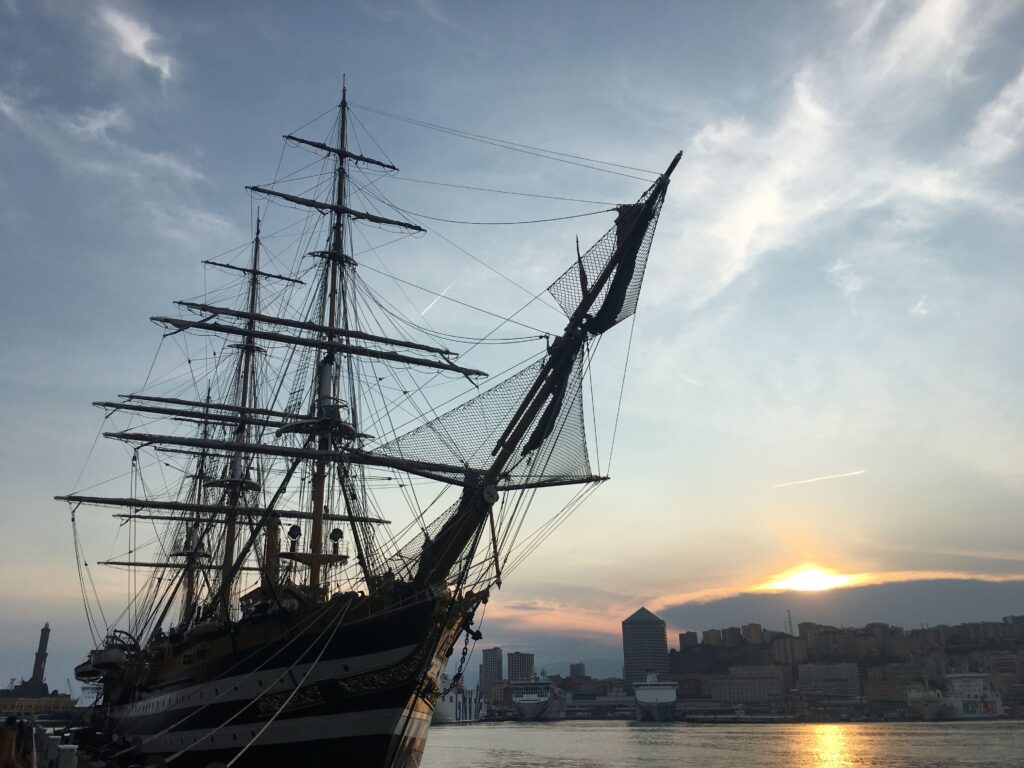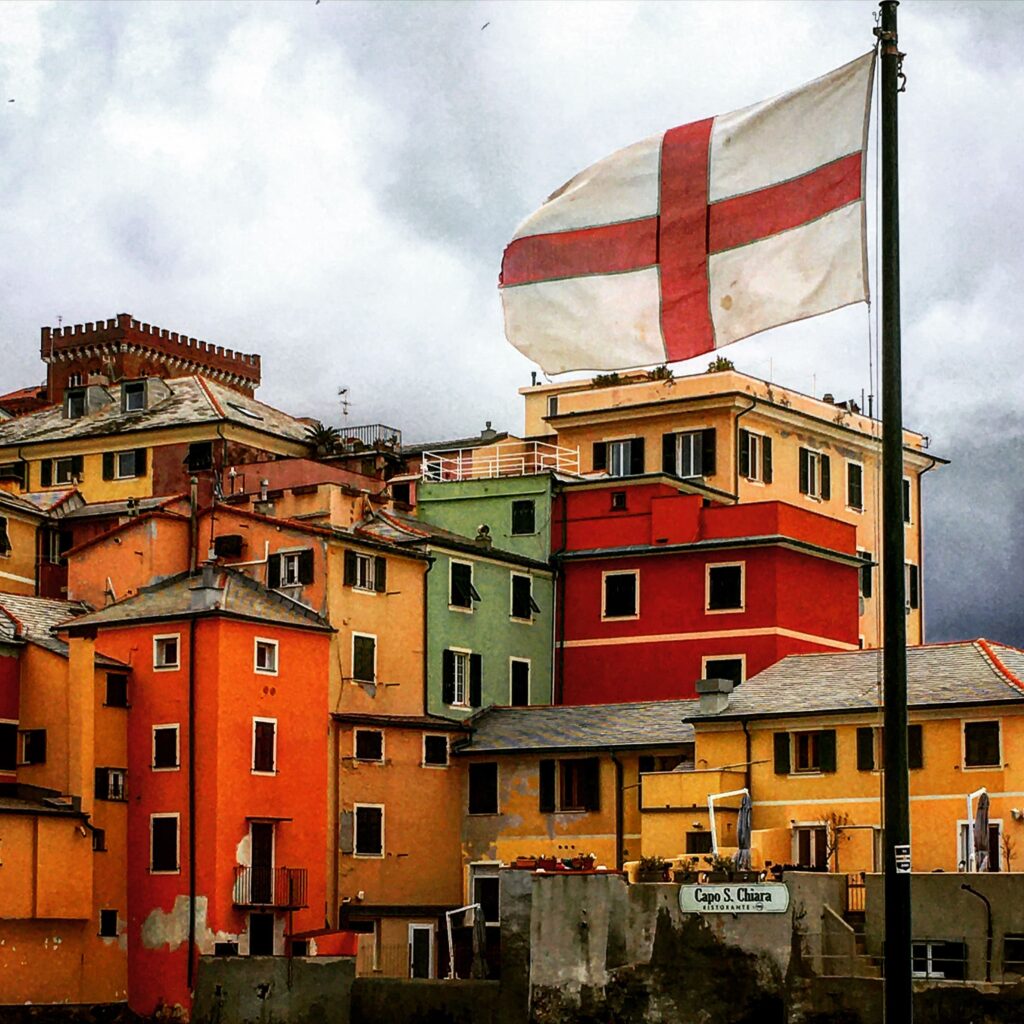The experience
Genoa, a city overlooking the Ligurian Sea, enchants travelers with its thousand-year history, its port and the tangible evidence of the journey that profoundly marked the destiny of thousands of people between the nineteenth and twentieth centuries.
This two-day itinerary focuses on Genoa as a starting point to the new world.
We will cross the cobbled alleys and historical monuments of Genoa, digging into the link between the maritime past and the poignant stories of the emigrants who crossed the borders of this city in search of a new life.
After breathing in the salty air of the port, we’ll head into the narrow, winding alleys of the old town. This urban labyrinth will catapult us back in time, transporting us to the time when the city was the crossroads of people coming from all over Italy to embark on a sailing brig or a motor steamer to the Americas.
The colorful medieval buildings, the narrow and dark alleys, the lively squares and the port activities will transport us to a unique atmosphere, where the past merges with the present in a Mediterranean souk atmosphere.
The parts of the city that we will focus on the most are the port, the Museum of Italian Emigration and the Lanterna.
The journey begins in the beating heart of Genoa: its port. Known as the “oldest port in Italy”, this scenic seaport has seen ships ply its waters since the Middle Ages.
Watching the ships come in and out, you are immediately immersed in the history of a place that has been the starting point for countless adventures.
The ancient docks, centuries-old cranes and restored warehouses tell stories of trade, discoveries and departures that have shaped the destination of many families.
The Museum of Italian Emigration stands as a custodian of the testimonies of those who have abandoned their homeland in search of opportunities beyond national borders.
The faded photographs, the letters with unsteady handwriting and the period objects will introduce us to the lives of those who left with a cardboard suitcase and a strong hope in their hearts.
An exciting exploration that will allow us to fully understand the courage, determination and difficulties encountered by those who embarked on this extraordinary adventure.
The Lantern of Genoa, the majestic symbol of the city, is one of the oldest and most famous lighthouses in the world, as well as being one of the historical emblems of the port of Genoa.
Rising majestically on the hill of San Benigno, the Lanterna dominates the horizon and offers an extraordinary panoramic view of the city and the Ligurian Sea.
It was the last thing that emigrants leaving the Ligurian capital saw as they moved away from the coast and it is not difficult to imagine their hearts already swollen with nostalgia for their homeland.
Another part of the trip that we will explore together is the one related to the sailing conditions. Inside the Museum of the Sea and Navigation there is an entire section dedicated to the sea crossing on the ocean liners and steamships of the time.
Literally put yourself in the shoes of your ancestors, board with the passport of one of them, get on board and experience first-hand the conditions of travel in third class.
And when you arrive at Ellis Island, try to pass the health and safety check. Only at the end will you find out if you have obtained the long-awaited entry visa or if, on the contrary, you will be sent back with a “denied” stamped in large letters on your identity document.

Shortly
Tour
Visit of the city and significant places for emigration
The proposed itinerary goes beyond the traditional guided tour and explores the places in Genoa that marked the departure of Italian emigrants at the end of the nineteenth century.
Through the words of your guide, you will make an imaginative journey in the footsteps of your ancestors, experiencing the expectation and hope of all those who have made this leap into the unknown.
During the great emigration period, Genoa was one of the ports of embarkation for transoceanic navigation, especially to South America and the United States.
The visit explores the motivations of thousands of emigrants, the places frequented before departure and the conditions of the journey.
The “Old Port” was the exit point from Italy as early as the nineteenth century, as the city adapted to the increase in migrants.
The Maritime Station, built in the 1930s, managed the arrivals and departures of new ocean liners.
The visit continues among smells and activities around the port, in the alleys that welcomed emigration.
You will taste the typical Genoese dishes in the ancient “sciamadde” also frequented by emigrants.
Piazza de Ferrari, once the headquarters of the Società di Navigazione Italia, is part of the itinerary, with insights into the history of the shipowner Raffaele Rubattino.
The itinerary offers an emotional journey through the lives of Ligurian and non-Ligurian migrants, enriching the understanding of your family roots.
Mei - The Museum of Italian Emigration
The Museum of Italian Emigration in Genoa is a tribute to the history of Italians who sought better life opportunities abroad.
Spread over 3 floors, the national museum preserves memories and narratives across 16 thematic areas, following the path of millions of emigrants from the late nineteenth century to the mid-twentieth century.
The rooms offer a complete immersion in the experiences of many people, using historical documents, photographs, letters and audiovisual testimonies, combining a chronological and thematic perspective.
Particularly moving is the section dedicated to personal stories, where the direct voices of the emigrants tell stories of sacrifice and resilience.
In the museum we will help you to put your personal story in the historical context of Italian emigration.
The reasons for the journey that pushed your ancestors away from Italy will be even clearer to you and, if you wish, we can reflect together on universal themes such as identity and belonging.
The MEI museum is an educational and emotionally engaging place capable of creating a dialogue between past and present.
Genoa's Lighthouse
The lighthouse of Genoa that the Genoese call “lanterna”, lantern, is an emblematic icon of the city.
It was once an isolated building and inaccessible to the public.
Today, it is possible to reach it through a pedestrian promenade that starts from the parking lot of the Ferry Terminal.
This route offers an exceptional view of the most active part of the Port of Genoa.
At 76 metres high, the Lanterna is the tallest lighthouse in the Mediterranean and the second tallest in Europe.
The Genoese lighthouse was the last thing Italians saw as they said goodbye to the old world in search of fortune. And most likely, it was the same for your ancestors.
Inside the fortifications built for its defense, today there is a unique museum, which does not exhibit objects, but tells the story of Genoa and its province through stories and testimonies, embracing aspects ranging from history to art, material culture to characters, local traditions.
To reach the top of the lighthouse, you have to climb 172 steps but once at the top, the view of the port city is incomparable.
Righi and the village of Boccadasse
Our imaginary journey dedicated to departures takes us, as a last stop, to the places of farewell.
It sounds like a play on words, but it is in the places of the city that aroused the most nostalgia that we want to take you.
And we do it on the notes of a song: “Ma se ghe pensu” written in Genoese dialect in 1925.
It tells the story of a Genoese who left poor for the Americas and manages to improve his economic situation.
After thirty years, overwhelmed by nostalgia, he decides to return to Genoa, despite his son’s opposition.
Before finally going back, he sings about the beauty of Genoa and some of its iconic places.
One of these is the Righi, a panoramic point located on the heights and from which you can enjoy a poignant view of the city.
We will reach it by funicular, one of the alternative means that the Genoese use to move from the bottom to the top and vice versa.
Our day together will end with an aperitif at sunset on the beach of Boccadasse where fishermen once lived and which, with its multicolored facades, inspired the Boca neighborhood in Buenos Ayres.
Let us guide you on your journey to the Roots
Don't miss the opportunity to explore the places that have shaped your origins, request a tailor-made itinerary without obligation
